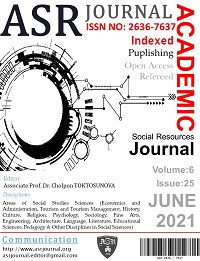Author :
Abstract
Türkiye’de modern ilkokulların temellerinin nasıl atıldığı ve bu temelin hangi şartlarla olgunlaştığı bu makalenin temel çıkış noktasıdır. Cevabını bulmak için Osmanlı dönemine indiğimizde karşımıza ibtidaiye mektepleri adıyla anılan ve geleneksel Osmanlı ilkokulları olan sıbyan mekteplerinden ayrı olarak düşünülen bu okullar çıkar. İbtidaiye mekteplerinin ortaya çıkış şartları Osmanlı Devleti’nin modernleşme hikayesinin aşağıdan bir şekilde planlanmasıdır. Toplumun bütün kesimleri artık devletin toptan modernleştirme projesine böylece dahil edilmiştir. Osmanlı yöneticileri devletin ve toplumun Batı Avrupa ülkelerine göre geri kaldığının farkındadır ve bunun için sadece yüksek tahsil vererek bu işi çözemeyeceğini anlamıştır. İlkokulları modernleştirme adına o dönem için siyasi / bürokratik elitin kafasında iki türlü bir yöntem vardı. Sıbyan mekteplerini ıslah etmek ve ibtidaiye mektepleri açmak. Sıbyan mekteplerinin ıslah edilmesi amacının da asıl hedefi aslında ikinci amaca, yani ibtidai mekteplerine hizmet edecektir.
Keywords
Abstract
The main starting point of this article is how the foundations of modern primary schools were laid in Turkey and the conditions under which this foundation matured. When we descend to the Ottoman period to find the answer, we encounter the schools, which are called Ibtidai schools and are considered separate from the traditional Ottoman primary schools (Sıbyan Mektebi). The conditions for the emergence of Ibtidai schools are the planning of the modernization story of the Ottoman Empire from below. All segments of society were included in the state's wholesale modernization project in this way. Ottoman administrators were aware that the state and society were backward compared to Western European countries, and they understood that they could not solve this problem simply by giving higher education. Ottoman rulers were aware that the state and society were backward compared to Western European countries. They understood that they could not solve this problem simply by giving higher education. There were two methods in the minds of bureaucrats at that time in order to modernize primary schools: Improving the primary schools (Sıbyan Mektebi) and opening Ibtidai Schools. The main goal of the improvement of primary schools will actually serve the second purpose, namely Ibtidai schools.
Keywords
- Akyüz, Y. (2007). Türk Eğitim Tarihi, ANKARA,: Pegem.
- Ergin, O. (1977). Türkiye Maarif Tarihi, Cilt 1-2, İstanbul: Eser Matbaası.
- Gündüz, M. (2018). “II. Abdülhamid ve II. Meşrutiyet Döneminde Eğitim”, İstanbul: İdeal-Kültür Yayıncılık.
- Hızlı, M. (2008). “Osmanlılarda İlköğretimin Tarihi”, Türkiye Araştırmaları Literatür Dergisi, Cilt 6, Sayı 12.
- Kodaman, B. (1991). Abdülhamid Devri Eğitim Sistemi, Ankara: Türk Tarih Kurumu.
- Sakaoğlu, N. (2003). Osmanlı’dan Günümüze Eğitim Tarihi, İstanbul: İstanbul Bilgi Üniversitesi Yayınları.
- Somel, S.A. (2015). Osmanlı’da Eğitimin Modernleşmesi: İslamlaşma, Otokrasi ve Disiplin, İstanbul: İletişim Yayınları.
